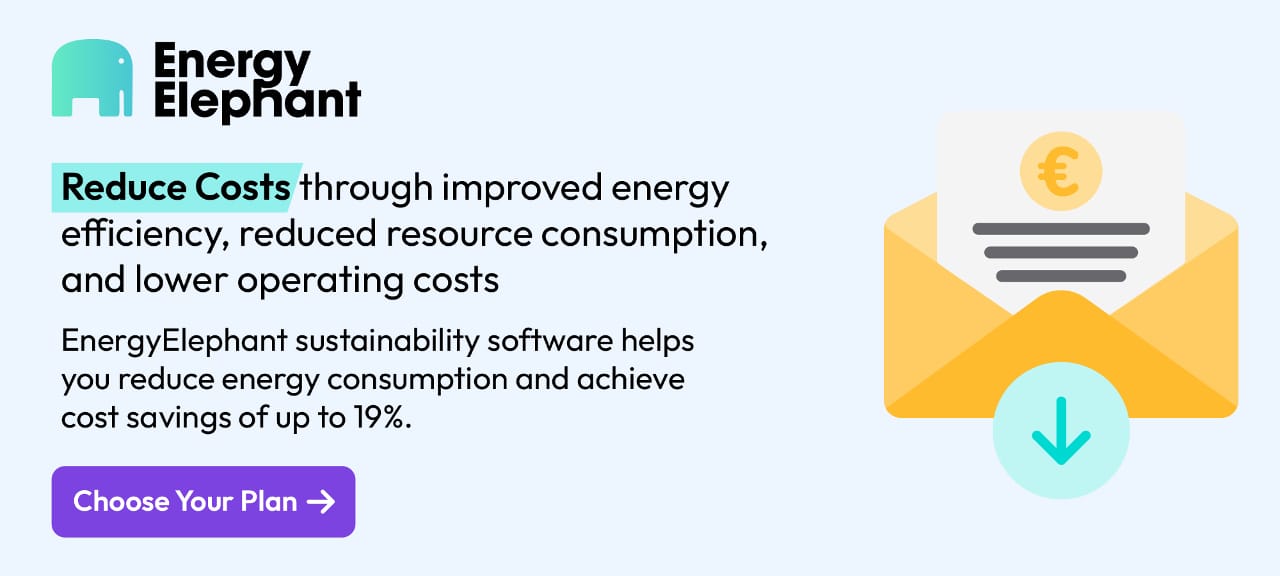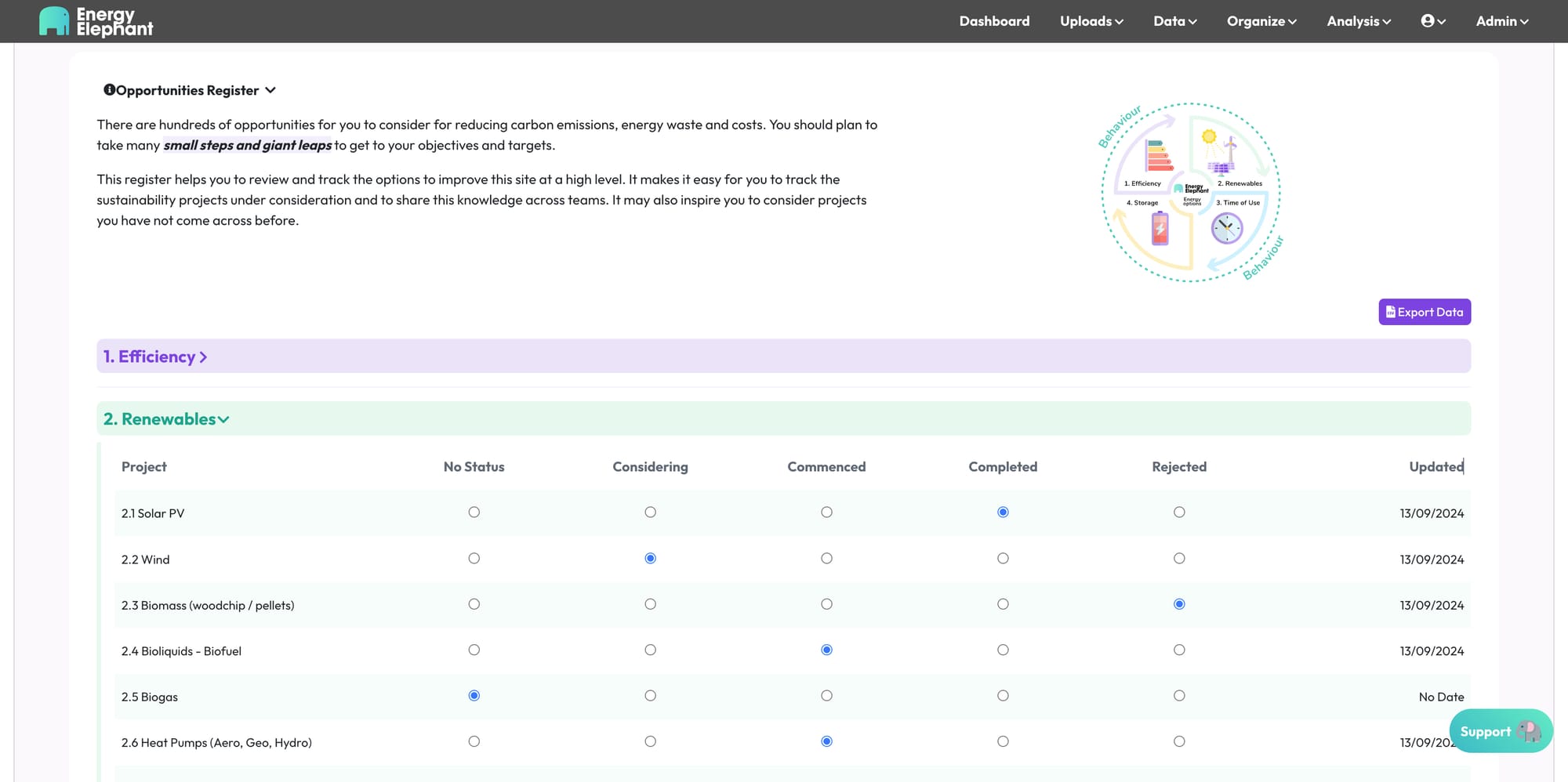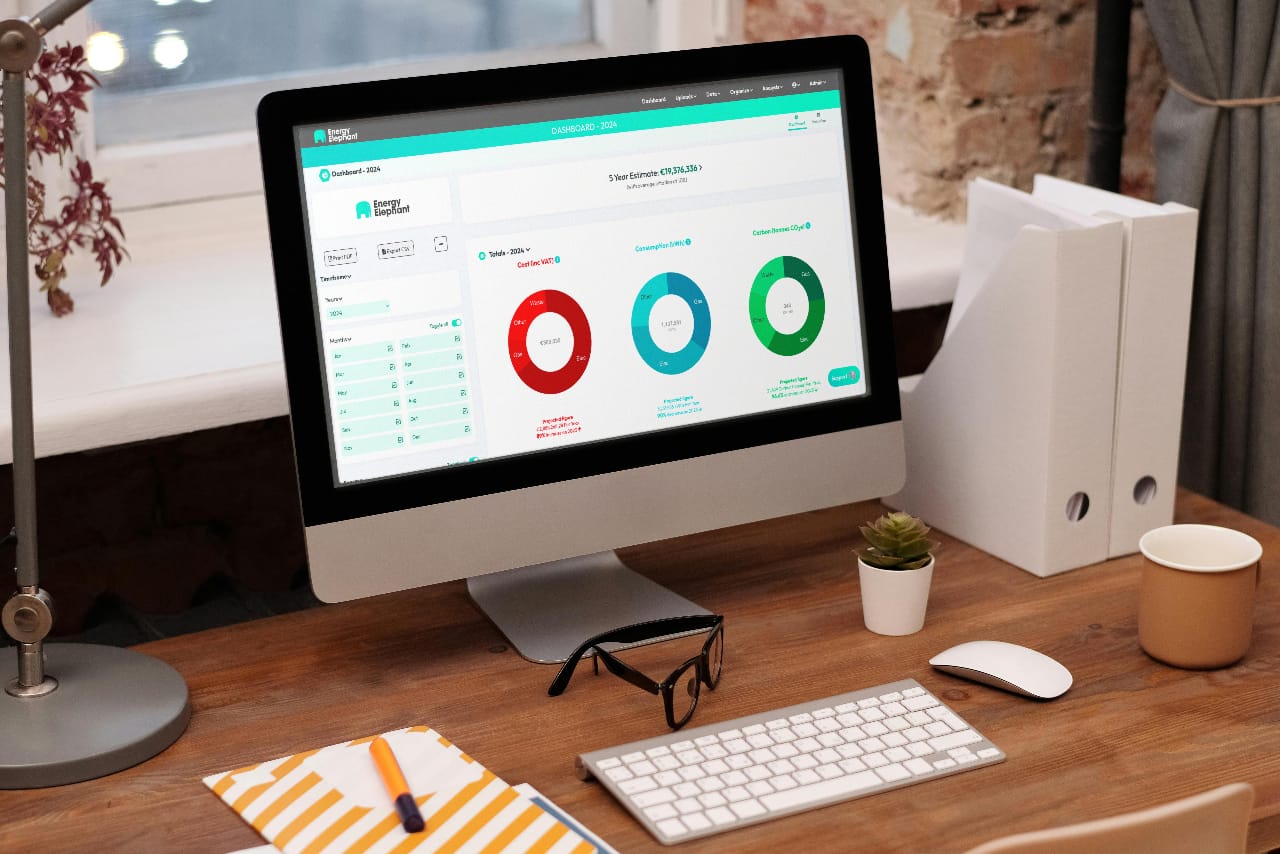Create an Effective Energy Budget for Your Business
Energy costs are one of a company's top three operating expenses. We show you how to create an effective budget that’ll not only help reduce your energy consumption and costs, but also improve sustainability across your organisation.

Creating an energy budget is more than just a financial exercise – it's an opportunity to align your operations with your company's broader Environmental, Social, and Governance (ESG) goals. In this guide, we'll show you how to create an effective energy budget to not only boost operational efficiency but also improve sustainability across your organisation.
1. Assess Your Current Energy Usage
Studies show that energy costs are one of a company's top three operating expenses. To reduce energy costs, you'll first need to assess your current energy usage by conducting an energy audit. By reviewing your utility bills over the past 12-24 months, you'll be able to identify high-consumption periods and energy-intensive operations, and pinpoint inefficiencies.
2. Set Clear Energy Goals
Once your audit is complete, you'll need to set clear energy objectives to ensure your budget is focussed, making it easier to allocate resources effectively. Your energy budget should align with Specific, Measurable, Achievable, Relevant, and Time-bound (SMART) goals. For example:
- Reduce energy consumption by 10% within a year
- Increase renewable energy usage to 25% by 2028
- Align energy reduction efforts with ESG goals
3. Engage All Stakeholders
Effective energy budgeting requires collaboration across departments, from Finance to Operations, and there are increasing cross-functional dependencies when it comes to a company's compliance with international protocols and frameworks, such as B Corp and the recently launched Corporate Sustainability Reporting Directive (CSRD).
You should engage all stakeholders to fully understand the scope of your responsibilities in the reporting process, and then ensure that all the resources your Energy/Sustainability team need to perform their duties are incorporated in your energy budget.

4. Establish an Energy Cost Baseline
An energy baseline establishes the amount of energy your building uses over a determined period of time, as well as its associated costs. A clear energy baseline not only helps monitor your performance, but also the effectiveness of a specific change by comparing the data before and after the change is made. Verifying improvement against the baseline is an important part of reporting under ISO 50001 and other ISO standards. To create an energy cost baseline:
- Define a specific time period to capture typical energy consumption; preferably, this period would cover at least the two previous years – to account for any seasonality patterns in your energy consumption and allow for year-to-year trends to emerge (tip: try to avoid using a COVID-impacted year in your baseline)
- Outline the organisational or operational boundaries within which energy consumption will be measured, e.g. one site or multiple sites; within certain departments or across your entire organisation
- Gather historical energy usage data for the baseline period; this will serve as a reference point to measure future energy performance, and is essential for justifying energy-efficiency investments
- Adjust for any variables that influence the energy consumption in your building; these affecting factors can be used to create Energy Performance Indicators to track your efficiency over time
- Remember to document the methodology used to establish your baseline to ensure consistency and transparency
5. Prioritise Energy-efficiency Investments
Careful planning and prioritisation will help you invest in the technologies and infrastructure you need to improve energy efficiency and reduce costs in the short-term, whilst ensuring your business is well-positioned for future growth and competitiveness. Examples of projects include:
- Switching to energy-efficient lighting; LED bulbs consume 80-90% less power than incandescent bulbs
- Installing modern Heating, Ventilation, and Air Conditioning (HVAC) systems and controls
- Building insulation improvements
- Using building automation to control energy use based on occupancy
- Investing in renewable energy sources, e.g. on-site solar PV installations
- Upgrading outdated energy management systems (a fit-for-purpose energy and sustainability management platform can provide an immediate return-on-investment (ROI) of over 300% per year)

6. Factor in Rising Energy Costs
Energy prices fluctuate due to market trends and geopolitical factors. Incorporate price projections into your budget by:
- Monitoring energy market trends
- Considering fixed-rate contracts to hedge against price hikes
- Building contingency funds for unexpected cost increases
7. Plan for Maintenance & Repairs
Regular maintenance of energy systems is key to preventing inefficiencies and unexpected costs. Be sure to budget for:
- Scheduled maintenance of energy-intensive equipment like boilers and HVAC systems
- Unplanned repairs to ensure energy systems run efficiently
- Upgrading ageing equipment with energy-efficient alternatives
8. Monitor & Adjust the Budget
Finally, an energy budget should not be static. A flexible budgeting system and regular budget reviews will allow your business to respond quickly to new opportunities and challenges, and enable you to make adjustments when needed.

